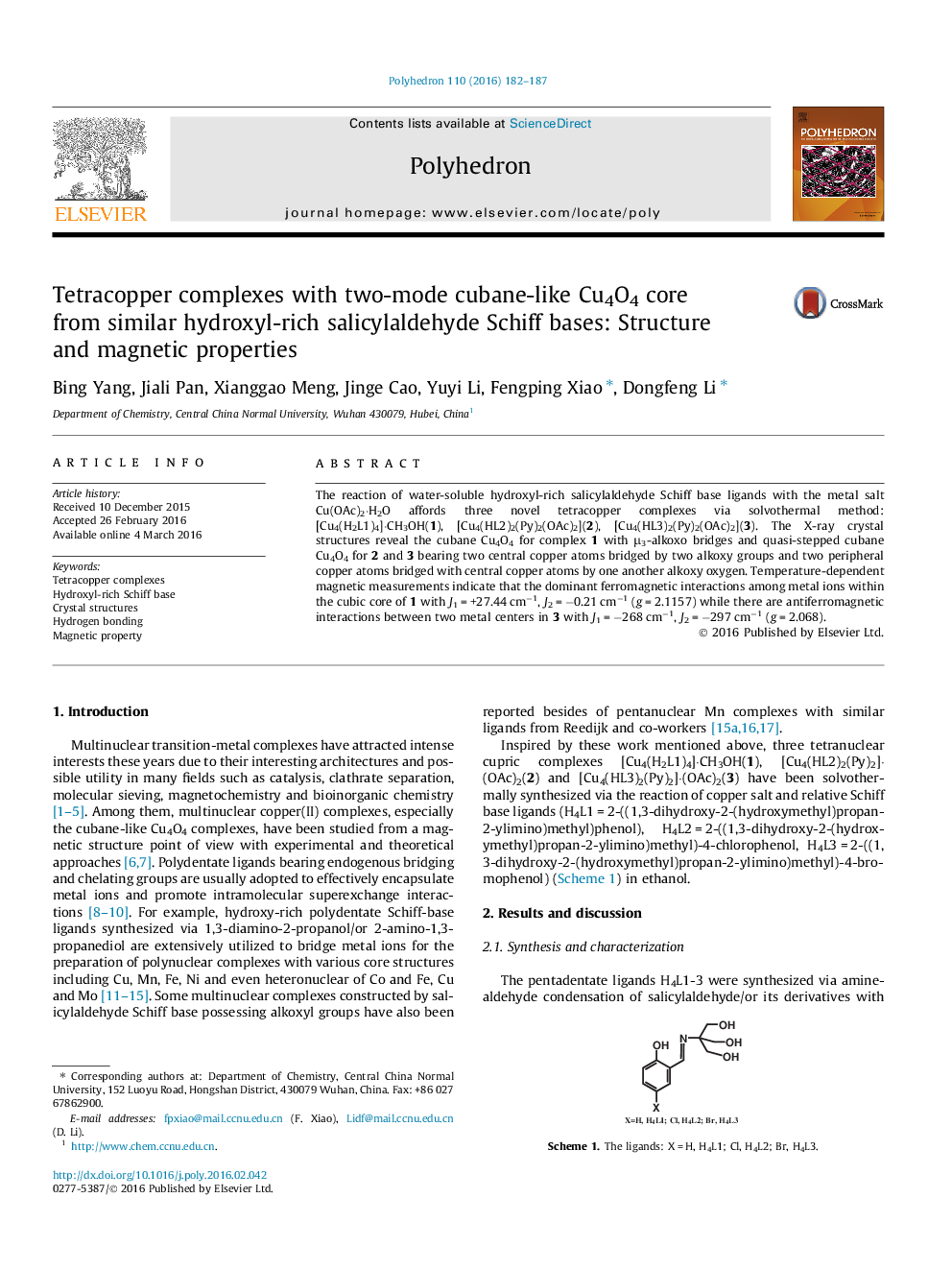| Article ID | Journal | Published Year | Pages | File Type |
|---|---|---|---|---|
| 1335606 | Polyhedron | 2016 | 6 Pages |
The reaction of water-soluble hydroxyl-rich salicylaldehyde Schiff base ligands with the metal salt Cu(OAc)2·H2O affords three novel tetracopper complexes via solvothermal method: [Cu4(H2L1)4]·CH3OH(1), [Cu4(HL2)2(Py)2(OAc)2](2), [Cu4(HL3)2(Py)2(OAc)2](3). The X-ray crystal structures reveal the cubane Cu4O4 for complex 1 with μ3-alkoxo bridges and quasi-stepped cubane Cu4O4 for 2 and 3 bearing two central copper atoms bridged by two alkoxy groups and two peripheral copper atoms bridged with central copper atoms by one another alkoxy oxygen. Temperature-dependent magnetic measurements indicate that the dominant ferromagnetic interactions among metal ions within the cubic core of 1 with J1 = +27.44 cm−1, J2 = −0.21 cm−1 (g = 2.1157) while there are antiferromagnetic interactions between two metal centers in 3 with J1 = −268 cm−1, J2 = −297 cm−1 (g = 2.068).
Graphical abstractTwo different kinds of structures of Cu4O4-containing complexes resulted from the reaction of similar water-soluble hydroxyl-rich salicylaldehyde Schiff base ligands with Cu(OAc)2·2H2O. Complex 1 adopted in cubic Cu4O4 structure with μ3-alkoxo is ferromagnetic interaction between four metal centers, while complex 3 with stepped-cubane structure shows antiferromagnetic interaction.Figure optionsDownload full-size imageDownload as PowerPoint slide
